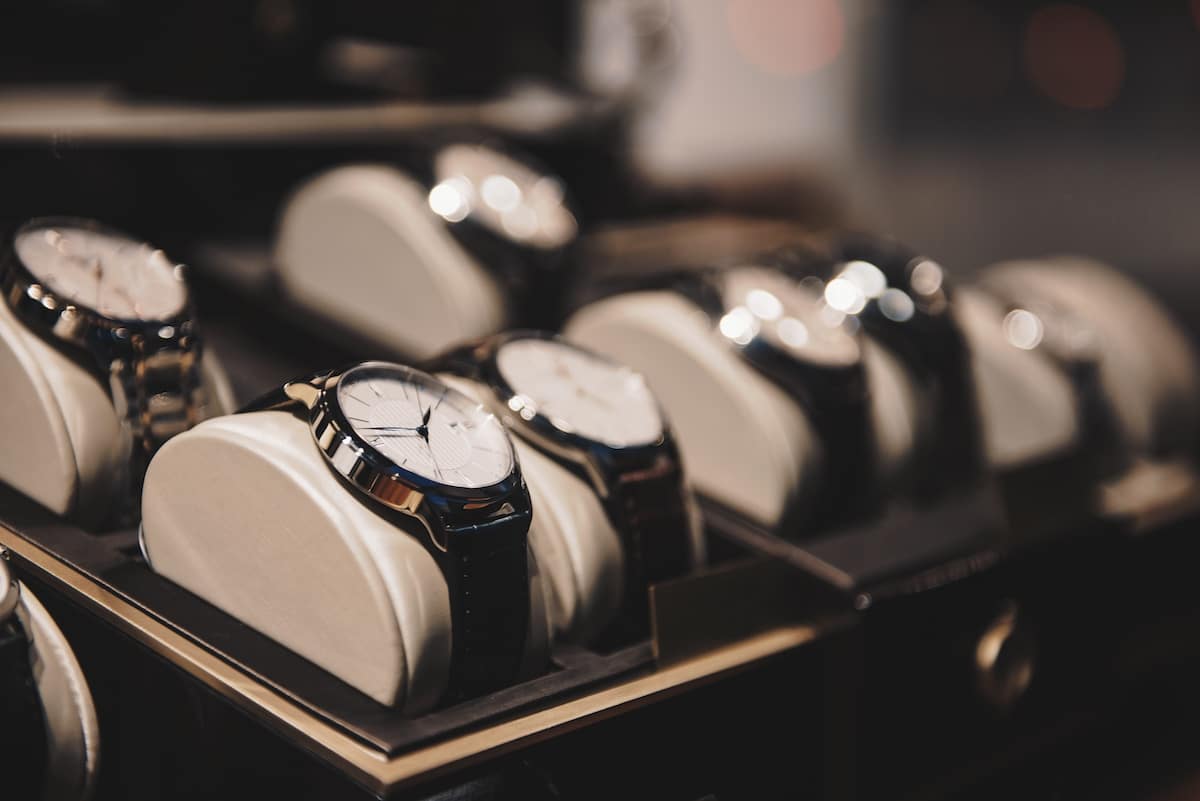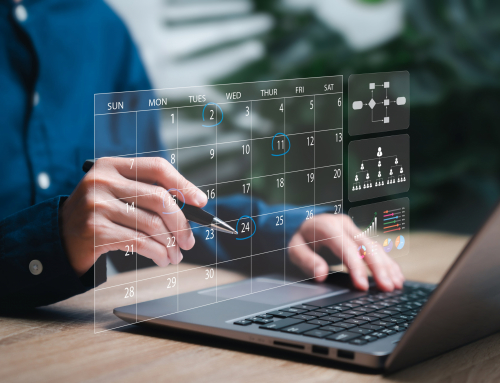Luxury Retail Clienteling: Enhancing the High-End Shopping Experience
Luxury isn’t just about the product—it’s also about the entire experience customers have with your brand: the relationship they have with your brand, the feeling of wearing or using your products, the status, the exclusivity, the service, and more.
But you know this. The question is, how do you create this?
Clienteling is the key to not only creating high-end customer experiences, but also creating strong, loyal customers who have a relationship with your brand and get to truly experience luxury.
In this article, we’ll explore how luxury retail clienteling works and how you can enhance the high-end shopping experience in meaningful ways that make a lasting difference on your customers.
The Cornerstones of Luxury Retail Clienteling
Luxury retail clienteling has three primary cornerstones: relationships, personalization and data. All three of these things are in some way reliant on and dependent on one another.
For example: you can’t have relationships with your customers without personalization, and you can’t have personalization without data. In turn, though, you can’t get as much data without relationships (and trust), and you can’t create personalized experiences unless you know your customers well through relationships.
Since each of these hinge on the others, let’s take a closer look at each:
Building authentic and long-term relationships. In many ways, this is the definition of clienteling. Through clienteling, you’re hoping to create long-term relationships where clients feel known, cared for and understood by your brand. There’s no one right way to do this—in fact, there’s as many different strategies as there are successful luxury brands—but it’s definitely an essential step in effective clienteling.
Creating personalized shopping experiences. Once you have relationships with your customers, you can begin to create personalized shopping experiences that will be memorable for customers and strengthen trust, affinity and loyalty to your brand. Personalized experiences also create deeper relationships—as customers learn that your brand knows them and can deliver tailored experiences based on their needs, desires and preferences, they will deepen their relationship with your brand.
Data-driven insights. At the crux of both of these is data. With a large customer base, it can be nearly impossible to get to know each of your customers on a 1:1 basis. With the right data, though, it isn’t necessary to do so. Data allows you to create personalization and relationships with your customers at scale.
Technology’s Role in Modern Luxury Clienteling
Modern luxury clienteling has one major advantage to clienteling in age’s past: technology. Yet despite all of the technological advancements that allow companies to increase personalization, collect more customer data, strengthen customer experiences and so on, far too few companies put this technology to its full use.
For example, here are three ways brands are using technology to strengthen their clienteling.
Ready to take your business to the next level? Let our call center experts show you how we've helped organizations just like yours seamlessly scale while lowering costs and increasing efficiencies.
You won't regret it.
Leverage CRM systems for a 360-degree customer view. It’s not just about having the right technology, it’s about leveraging your technology for the right results. Integrated technology is essential for modern luxury clienteling—and your CRM systems might turn out to be one of your most underrated resources. Connecting your CRM systems with other sources of customer data, such as clienteling systems or in-store displays—allows employees to see all customer details and history at any and every touchpoint. Not only does this create more seamless experiences for your customers, but it also creates higher levels of personalization. As a result, your customers constantly feel seen and understood by your brand, whether they’re shopping in-store, online, on social media, or somewhere else.
Augmented reality and virtual shopping assistants. There are a number of brands now who are using AR / AI features to allow customers to get personalized advice, in-store and online. For example, GUCCI implemented AR features in their app that allows customers to virtually “try on” their shoes and products, seeing what they would look like in the real world. Other brands, like The North Face, are using virtual shopping assistants to answer questions from in-store shoppers and make personalized recommendations—a service shoppers are appreciating, according to the 60% click-through rate on product recommendations.
Using AI for predictive personalization. Speaking of AI, predictive personalization is also gaining steam among luxury clienteling. Instead of gathering data in real-time from the customer—i.e. as a chatbot does to answer questions or provide recommendations—AI can use what data you already have from the customer to create personalized recommendations and more based on what you predict the customer will like.
A great example of a brand doing this is Spotify—they use this with their new AI playlists, with “for you” playlists, personalized radio channels and more. All of this is based on huge data sets of each listener’s history, likes, preferences and more to create personalized algorithms and recommendations. The more data you have on your customers, the more reliable your AI-based personalization can be.
Training Staff for Successful Luxury Clienteling
When it comes to luxury clienteling, it’s not just technology that’s needed—you also need the right employees in place to both use the technology effectively, and to introduce a human touch that can deepen customer relationships and affinity for your brand.
Training staff for successful luxury clienteling isn’t always straightforward, though, as there’s a wide range of skills needed for effective clienteling in the luxury space. For example, all customer-facing employees in luxury retail need to have soft skills such as strong emotional intelligence. Training for soft skills can be difficult, so looking for employees who already have strong soft skills is essential.
In addition, employees need to be trained on the nuances of luxury products and trends. After all, luxury isn’t just a product—it comes down to a lifestyle, a status, a “look,” the current trends, and more. Employees not only need to be up-to-date on these trends, but also aware of the various facets that go into creating luxury experiences. This is one of the biggest aspects of training for successful clienteling: providing training and agency for employees to create truly luxurious experiences. This learning can’t just happen once during their onboarding process—it needs to be ongoing and help employees continuously learn and adapt to changing client needs.
Challenges and Solutions in Luxury Retail Clienteling
Even with the best strategy in place, luxury retail clienteling comes with a variety of challenges. Three of the biggest we see among our clients are:
- maintaining exclusivity in an increasingly digital world
- staying relevant to new and existing luxury shoppers
- balancing privacy concerns with personalization
Here’s how we’re helping clients address each of these:
When it comes to exclusivity, the digital world makes things more difficult. Exclusivity is necessary for that luxury feeling, but the digital world makes it much easier to access just about everything. So how can luxury brands cope? Creating the feeling of exclusivity can look like:
- creating limited-edition releases
- hosting invite-only events for your VIP clients
- starting artisanal or limited-edition partnerships
- offering private memberships with exclusive benefits
- creating behind-the-scenes or exclusive content
These exclusive events and products can drive that luxury feeling. But there’s also the challenge of maintaining relevance for both new and existing luxury shoppers. As with many markets, younger shoppers are beginning to drive luxury retail—by 2026, it’s estimated that Millennial and Gen Z shoppers will make up 75% of the luxury market. As a result, the luxury market is continuing to be driven by high-spending, demanding young consumers, while also needing to cater still to more established clientele. Again, personalization is the key to creating relevant offers and products for your entire audience.
But this increased personalization—while creating growing relevance for your audience—can also create privacy concerns. 71% of consumers expect brands to deliver personalized experiences for them, and 57% of consumers are willing to share personal data in exchange for more personalized offers. But that increase in customer data means that luxury brands need to have the highest levels of security and data privacy in order to protect customer information—and their brand reputation. Even a single data breach can tarnish your reputation for decades to come. For many luxury brands, the right call center can support compliance and ensure the highest level of security and safety.
Measuring Success in Luxury Retail Clienteling
When it comes to measure success in luxury clienteling, there are four key metrics you need to know:
- Customer Lifetime Value (CLV)
- Repeat Purchases
- Referrals
- Customer Satisfaction (CSAT)
Each of these metrics will provide insight into your clienteling efforts.
CLV provides a measure of how valuable your customers are over the course of their lifetime with your brand. As a result, CLV provides a big-picture look at how loyal your customers are, how long they remain with your brand, how much money your customers spend over time, and so on.
Repeat purchases gives insight into customer loyalty and return. Obviously, the higher your rate of repeat purchases—and the higher the average number of purchases per consumer over their lifetime—the more successful and effective your clienteling strategies are.
Referrals are also often generated by loyal customers who have received personalized, memorable experiences with your brand. The higher your referral rate, the more likely your clienteling efforts are to be working.
Customer satisfaction (CSAT) is an essential measure for all brands—without understanding how satisfied your customers are, it’s difficult to understand and improve your CX and clienteling strategies’ performance.
CSAT is also a key way to gather quantitative customer feedback, which also plays a critical role in measuring success in luxury clienteling. The stronger your customer feedback loop, the more data you will have available to deepen customer understanding, improve your product and experiences and strengthen personalization.
With all metrics and data of success, whether qualitative or quantitative data, the most important element is adapting and refining your clienteling strategy based on the insights the data provides. While obvious, this is an oft-overlooked step. If you’re struggling to manage this in-house, an outsourced clienteling team can help collect, analyze, prioritize and implement your data for the best success.
Conclusion: The Future of Luxury Retail and Clienteling
Clienteling isn’t going anywhere in luxury retail—but as customer expectations change, your clienteling strategy will also have to shift to keep up. And in luxury, it’s not just about keeping up, but also about staying ahead. With the right clienteling strategies in place, you’ll not only know what customers want now, but you’ll also be able to predict what they’ll want tomorrow—and deliver it to them for a truly luxurious experience.
Looking for a partner who can support or execute your clienteling strategy with true omnichannel support, increased personalization, data-driven analysis and insights? ROI CX Solutions is your partner in clienteling, for luxury and beyond. Connect with an expert from our team today to see how we can improve loyalty, revenue and client satisfaction with clienteling.






